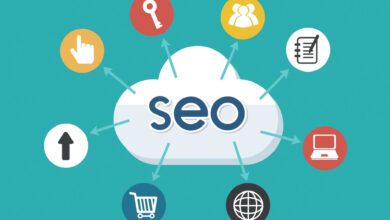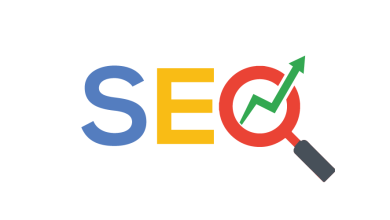What is SEO: The Zero Cost Search Marketing

Search Engine Optimization (SEO) is a critical digital marketing technique, as you’ve undoubtedly heard a hundred times. But do you truly understand how SEO works? You may not have a firm handle on this intricate and comprehensive procedure even if you have a fundamental idea of what it comprises.
SEO consists of several components, and understanding what they are and how they operate is crucial to comprehending why SEO is so vital. In a nutshell, SEO is important because it increases the visibility of your website, which means more visitors and opportunity to convert prospects into customers.
It’s also a great way to raise brand recognition, develop relationships with prospects, and establish oneself as a knowledgeable and trustworthy authority in your sector. So there you have it: all you need to know about SEO and why it’s so important in today’s digital world.
SEO Marketing’s Crucial Elements
Keywords
The days of keywords being the only SEO approach that counted are long gone, but that doesn’t mean they aren’t still important. The difference now is that in order to be effective, keywords must be well-researched, properly picked, and sparingly employed in your content.
But, exactly, what are keywords? Keywords are words and phrases that customers use to locate online material, and that companies may use to interact with customers seeking for their products and services.
When conducting keyword research, look for keywords with high search rates and low competition, as well as short-tail keywords, long-tail keywords, and local keywords to incorporate into your content. You should have secondary and tertiary keywords in addition to your primary or seed keyword since they will still be useful to your firm. Finally, optimize all of your titles, URLs, and other on-page SEO components with keywords
Content
Because content is the vehicle you use to reach and engage people, it’s an important aspect of SEO. It’s critical to understand your viewpoint and create content that suits.
For example, if you ran a nursery and wanted to boost your visibility, you might write a series of blogs about gardening, plant selection, growth advice, and other topics. When someone searching for knowledge on gardening did a search, your blog would come up, and you’d be able to create a relationship with that individual by offering useful information. When that prospect needed to buy a plant, for example, the idea is that you’d be the first nursery that sprang to mind.
Today’s material must be both instructive and entertaining, as well as topical and shareable. Content can take many different forms, including:
- Content on a website
- Videos
- Blogs (it’s simple to establish a blog for practise!)
- Infographics
- Podcasts
- Listicles
- How-to manuals
- E-books
- Posts on social media
- Local listing
Off-Page Search Engine Optimization (SEO)
External optimization tactics that take place outside of your site rather than on it are referred to as off-page SEO.
Backlink building is the most common off-page SEO approach since excellent backlinks from other websites inform search engines that your site is important and high-quality, which helps to develop authority.
Backlink building may take various forms, and some of the current best strategies include guest blogging, developing a large number of widely shared infographics, and incorporating influencer marketing into your content.
P.S. To ensure you understand the differences and make the most of both, see our entire guide to on-page and off-page SEO. Furthermore, some SEO specialists are now referring to off-page SEO as “reputation building.”
Local Search Engine Optimization (SEO)
As more people use mobile devices to search, local SEO is becoming increasingly vital. Mobile devices now account for 60% of all searches, with roughly half of those queries having a local purpose.
So, if you run a restaurant, local SEO will ensure that people in your neighborhood will find your website while searching for the top eateries in town.
Other local SEO recommended practises include claiming directory listings, building location-specific pages for your site, and developing pages for your business on Google My Business local directories and Google Maps also known as gateway pages.
Search Engine Optimization (SEO)
Paid marketing activities such as native advertisements, Google AdWords, social media ads, pay-per-click (PPC), Google shopping ads, display ads, and more are referred to as Search Engine Marketing (SEM).
Although search engine marketing (SEM) isn’t necessarily a big part of a complete SEO plan, it has its place because it may help you reach new and highly targeted audiences. You may also combine your SEO and SEM efforts.
The following are some examples of SEM advertising activities:
Campaigns that are both paid and targeted
Copy that is keyword-based and connects to your company or product.
Click-through rates (CTR) and cost-per-click (CPC) are two performance measures (CPC)
Understanding the Importance of Search Engine Optimization (SEO) for Modern Businesses
Rankings and Visibility
Increased visibility, or making it simpler for prospects to find you when they search for anything you have to offer, is one of the most crucial tasks of SEO. Your rating is directly proportional to your visibility.
It’s critical to improve your organic page ranking since the higher you rank on a search engine result page (SERP), the more likely prospects will discover you and click through to your site. The more successful your SEO efforts are, the higher your position and visibility will be, which is especially essential given that a quarter of online visitors never get past the first SERP.
Web Traffic
One of the key aims of SEO is to boost online traffic, which you may do through increasing visibility and ranks. Consider this: the top slot in a Google search results page receives roughly 32% of clicks, and going up one spot in search results may raise CTR by an incredible 30.8 percent.
The ‘Featured Snippet,’ often known as position #0 since it shows above the first ranking URL, is the holy grail for many marketers. This is frequently information from a blog’s landing page that answers a subject visitors are searching for and may significantly increase your organic click-through rate.
So, if you want more people to see your website using a search engine, you should employ SEO techniques that will help you rank within the top five results, ideally number one.
Authority
Page Authority (PA) is becoming increasingly crucial to search engines as it is to online users. Simply said, authority denotes that your website is dependable, of high quality, relevant, and useful.
The higher your score, the more authority your site has. Scores range from 1 to 100. While it’s tough to change your PA rating using tools like Moz, many SEO professionals feel it has something to do with your link profile – gaining external connections from reliable and well-visited sites.
Improving the Visitor Experience
Another reason SEO is important is that all of the effort you spend creating outstanding content and optimising your on-page SEO enhances your site’s usability. This results in a smooth and pleasant consumer experience.
When you take efforts to make your site responsive, for example, it will be accessible to all of your mobile users as well as those who visit from a laptop or desktop computer. Increasing your website load speed will also minimise your bounce rate and encourage users to stay on your site longer. Consumers want a website to load as rapidly as possible, with a three-second loading time restriction! The longer it takes for your page to load, the greater your bounce rate will be and the lower your conversions will be.
Search engines are not infallible.
Because search engines aren’t perfect, SEO is essential. If you don’t take action to address these flaws, your website will suffer as a result.
For example, if a site lacks a correct link structure, search engines may be unable to effectively crawl and index the site, resulting in lower ranks. Coding problems may completely block search engines, making it difficult for your site to rank, regardless of how much time you spend on other SEO strategies. The following are some more frequent areas where search engines might have issues:
- Pages that have been duplicated
- Forms
- Images, flash, audio files, video, and other non-textual material are all examples of non-textual content.
- Semantics and Language
Wrap-up
We recommend reading the Guide to SEO from beginning to end if you’re serious about increasing search traffic. We’ve tried to keep it as simple and straightforward as possible, because understanding the fundamentals of SEO is an important first step in achieving your online business objectives.
Go at your own pace, and don’t forget to take notice of the hundreds of references we mention throughout the SEO. They’re also deserving of your consideration.
Author: SEO services Malaysia
This article is posted in Article Mug.



